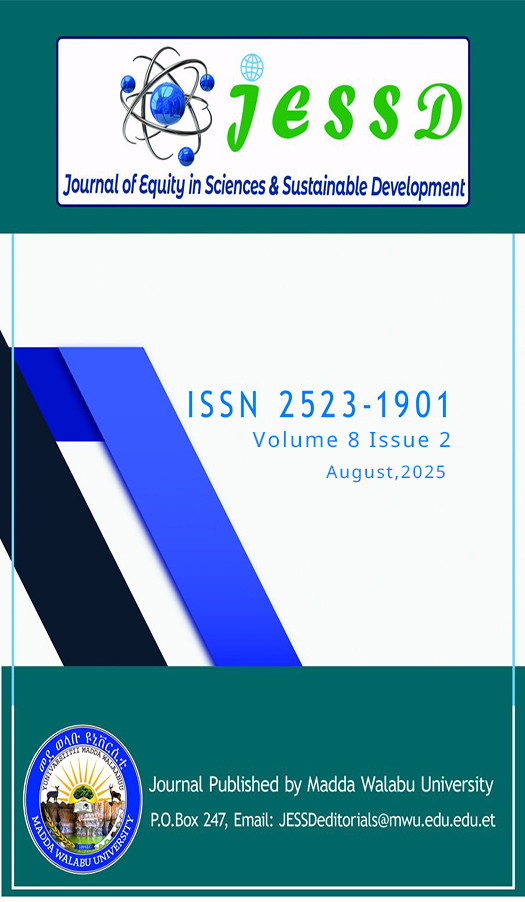Spatio-temporal Dynamics of Wetlands and their Effects on Biodiversity in Dinsho District, Bale Mountain Eco-Region, Southeastern Ethiopia
DOI:
https://doi.org/10.20372/mwu.jessd.2025.1579Keywords:
Bale Mountains, Biodiversity loss, Wetland degradation, Land use/land coverAbstract
Wetlands are ecologically significant ecosystems that provide a wide range of environmental, economic, and social services, including biodiversity conservation, water purification, and livelihood support. Despite their value, wetlands have undergone substantial degradation and reduction in both spatial extent and ecological function, particularly in developing regions. This study analyzes the spatiotemporal dynamics of wetlands and explores the major drivers of change, and the ecological consequences of wetland biodiversity in Dinsho District Bale Zone, Southeastern Ethiopia. ERDAS IMAGINE 2015 was used to explore multi-temporal Landsat satellite imagery from 1990, 2000, 2010, and 2020 to analyze trends in wetland land cover over 30 years. Apart from the remote sensing data, qualitative and quantitative data were gathered from household surveys, key informant interviews, focus group discussions, and direct field observations. Socioeconomic data were processed using SPSS version 20. The results indicated a major decline in wetland cover, from 10,934.25 hectares (16.88%) in 1990 to 6,090.79 hectares (10.19%) in 2020, with a total loss of 4,843.46 hectares (7.48%). Agricultural land expansion, overgrazing, sediment deposition, and climate variability drive these changes. Misconceptions of wetlands as marginal or unproductive land have contributed to their conversion for farming and grazing. This wetland habitat decline has resulted in a significant loss of biodiversity and the disappearance of endemic water bird species and indigenous vegetation. The study highlights the pressing need for integrated wetland management and stakeholder involvement to redress further ecological degradation and promote sustainable resource utilization.
Downloads
Additional Files
Published
How to Cite
Issue
Section
License
Copyright (c) 2025 Madda Walabu University Journal of Equity in Sciences and Sustainable Development

This work is licensed under a Creative Commons Attribution-NonCommercial 4.0 International License.



